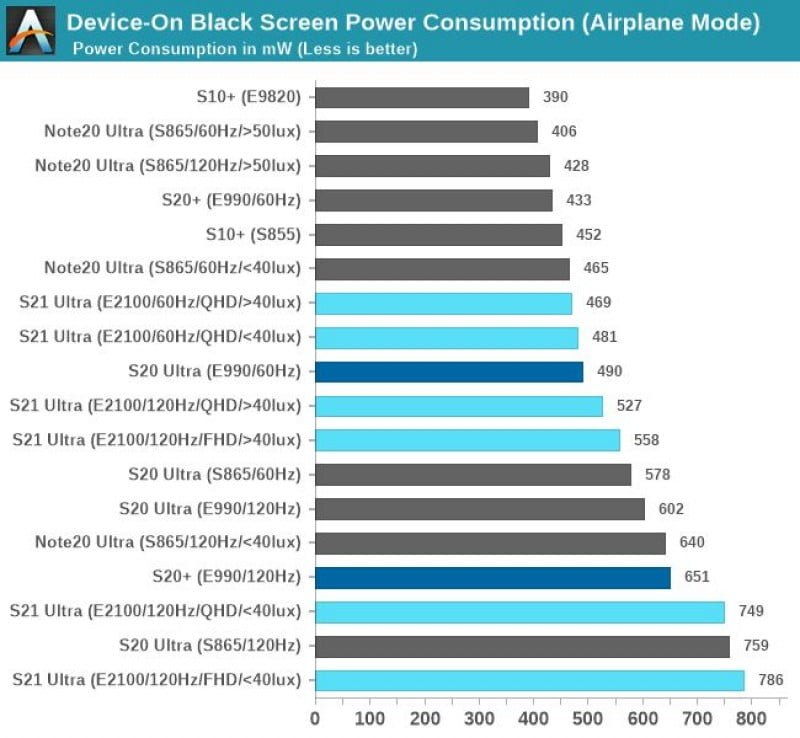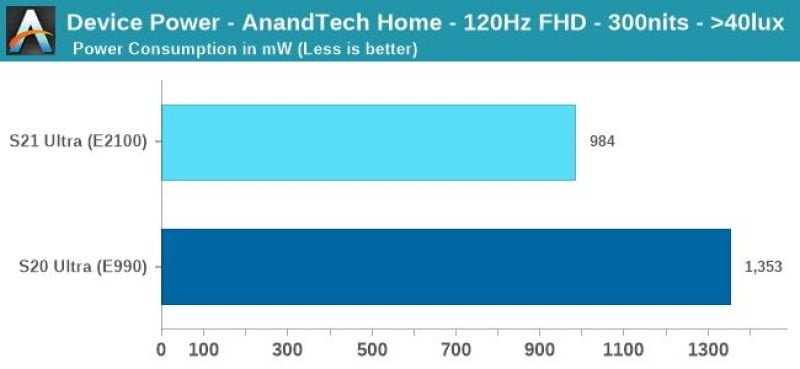The combination of smooth, faster display with good colour with good power efficiency is what makes up a good display. And new findings have shown that the display of the Galaxy S21 Ultra is better than the panel used on the Galaxy Note20 Ultra and huge improvement over that of the Galaxy S20 Ultra.
There are various areas where these improvements come into play. Let’s start from the fact that the display of the Galaxy S21 Ultra allows you to enable variable refresh rate at QHD+ resolution.
See Also: First Live Leak of the Huawei P50 Series Surfaced
The above is possible because Samsung increased the clock speed of the MIPI display interface to 1462MHz instead of using the standard 1157MHz (OnePlus did same thing with the OnePlus 8 Pro last year).

From the test done by AnandTech, they compared the OLED display of the Galaxy S21 Ultra with those of the Galaxy S20 Ultra and Note20 Ultra and there are some quote interesting things they discovered.
Under low light conditions (Less than 40 lux), the Galaxy S21 Ultra is shown to turn off its variable refresh rate and use 120Hz refresh rate. But, when the light is brighter above 40 lux, it consumes more power than the Galaxy Note20 Ultra but less power than the Galaxy S20 Ultra.
See Also: Honor expected to Launch its first Foldable Phone later this Year
In summary, the first test shows that while in black screen mode and the S21 Ultra is locked it 120Hz refresh rate, it consumes more power compared to the Note20 Ultra.

The situation is quite different with full white screen. In this mode, the OLED display of the Galaxy S21 Ultra becomes more efficient and consumes less power. According to the test, it is about 31% more efficient than the Galaxy S20 Ultra.
See Also: How MediaTek managed to dethrone Qualcomm in World’s biggest smartphone market
It is found that the display of S21 Ultra uses less power at its peak of 942 nits of brightness than the lower 778 nits maximum brightness of the Galaxy S20 Ultra. From the test, the Galaxy S21 Ultra also uses about 20% less power than the Galaxy Note20 Ultra at the same peak brightness.

When it is also set to a standardized webpage locked at 300 nits at 120Hz FullHD, the display of the Galaxy S21 Ultra consumes about 27% less power compared to the Galaxy S20 Ultra. And this improvement can not be overlooked.
See Also: Samsung Galaxy S21 Series Prices in Africa and Specs
In conclusion, it seems all these improvements are likely because of the new OLED emitter available in the screen of the Galaxy S21 Ultra. Samsung has provided limited details about it, but it is what makes the display of the Galaxy S21 Ultra more efficient than its predecessors. And it’s also the reason for such great battery life from the 5,000mAh batter capacity.
Have you watched our review of the Galaxy S21 Ultra? Click Here to watch the full review of the Samsung Galaxy S21 Ultra on our YouTube Channel.
Follow us on Twitter and Instagram @Techarena24_
